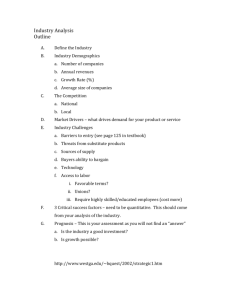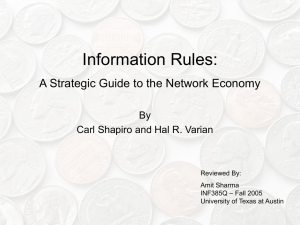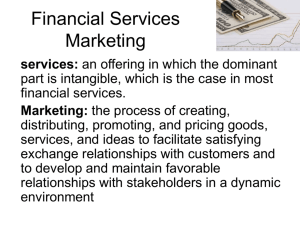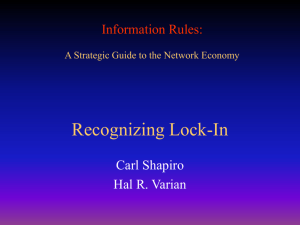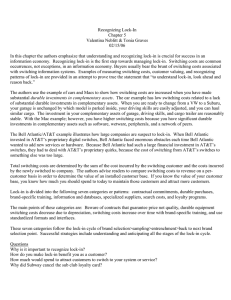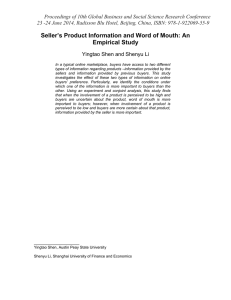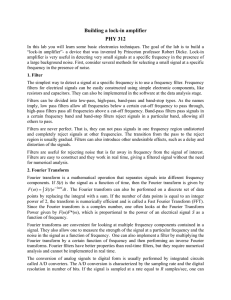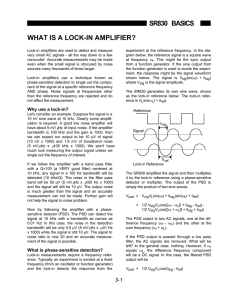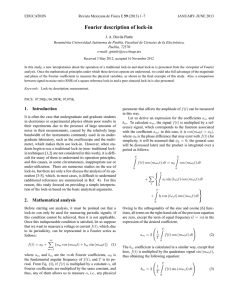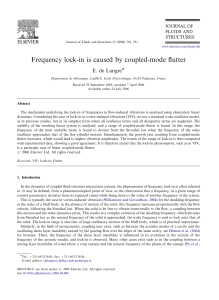CS 891 - Economics of Information Chapter 6 Summary: Managing Lock-In 2006
advertisement
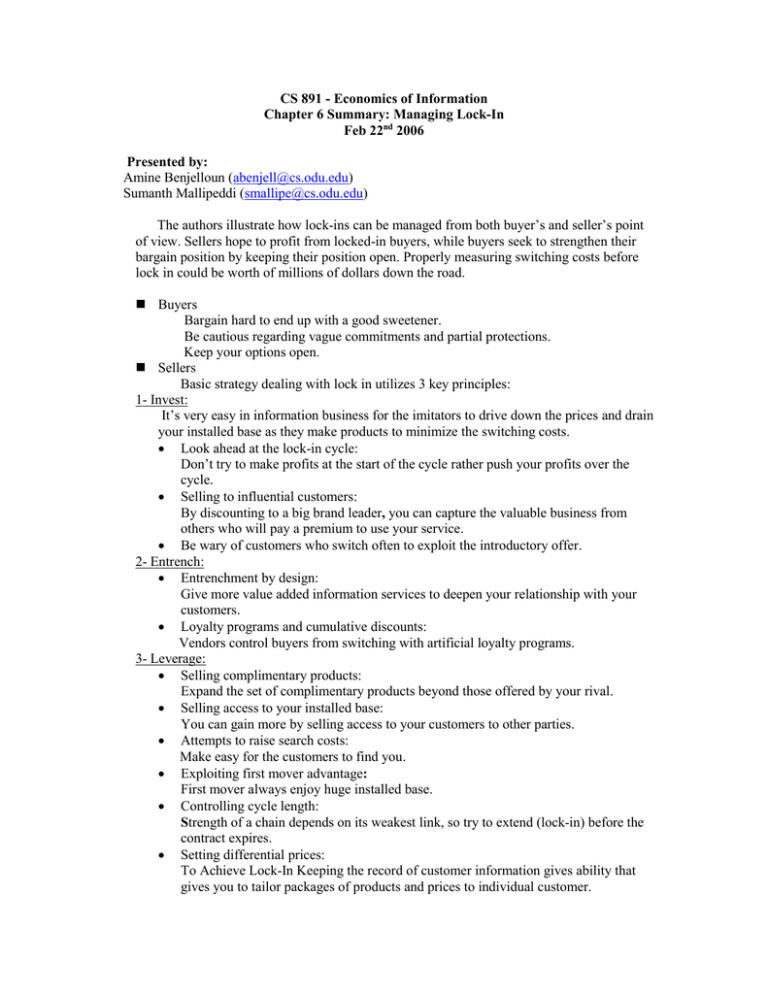
CS 891 - Economics of Information Chapter 6 Summary: Managing Lock-In Feb 22nd 2006 Presented by: Amine Benjelloun (abenjell@cs.odu.edu) Sumanth Mallipeddi (smallipe@cs.odu.edu) The authors illustrate how lock-ins can be managed from both buyer’s and seller’s point of view. Sellers hope to profit from locked-in buyers, while buyers seek to strengthen their bargain position by keeping their position open. Properly measuring switching costs before lock in could be worth of millions of dollars down the road. Buyers Bargain hard to end up with a good sweetener. Be cautious regarding vague commitments and partial protections. Keep your options open. Sellers Basic strategy dealing with lock in utilizes 3 key principles: 1- Invest: It’s very easy in information business for the imitators to drive down the prices and drain your installed base as they make products to minimize the switching costs. Look ahead at the lock-in cycle: Don’t try to make profits at the start of the cycle rather push your profits over the cycle. Selling to influential customers: By discounting to a big brand leader, you can capture the valuable business from others who will pay a premium to use your service. Be wary of customers who switch often to exploit the introductory offer. 2- Entrench: Entrenchment by design: Give more value added information services to deepen your relationship with your customers. Loyalty programs and cumulative discounts: Vendors control buyers from switching with artificial loyalty programs. 3- Leverage: Selling complimentary products: Expand the set of complimentary products beyond those offered by your rival. Selling access to your installed base: You can gain more by selling access to your customers to other parties. Attempts to raise search costs: Make easy for the customers to find you. Exploiting first mover advantage: First mover always enjoy huge installed base. Controlling cycle length: Strength of a chain depends on its weakest link, so try to extend (lock-in) before the contract expires. Setting differential prices: To Achieve Lock-In Keeping the record of customer information gives ability that gives you to tailor packages of products and prices to individual customer. Discussion Questions for Chapter-6 Q.1 Do you support giving out the access to your customers to other online merchants? If so, what precautions should be needed? Q-2 Say you are Sony, as a direct competitor to Apple, what steps would you take to enter the market with a new music player to attack the IPod? Q-3 Imagine you are Apple, what steps would you take to hold your existing customers and to attract the rival’s as well as the new customers?
